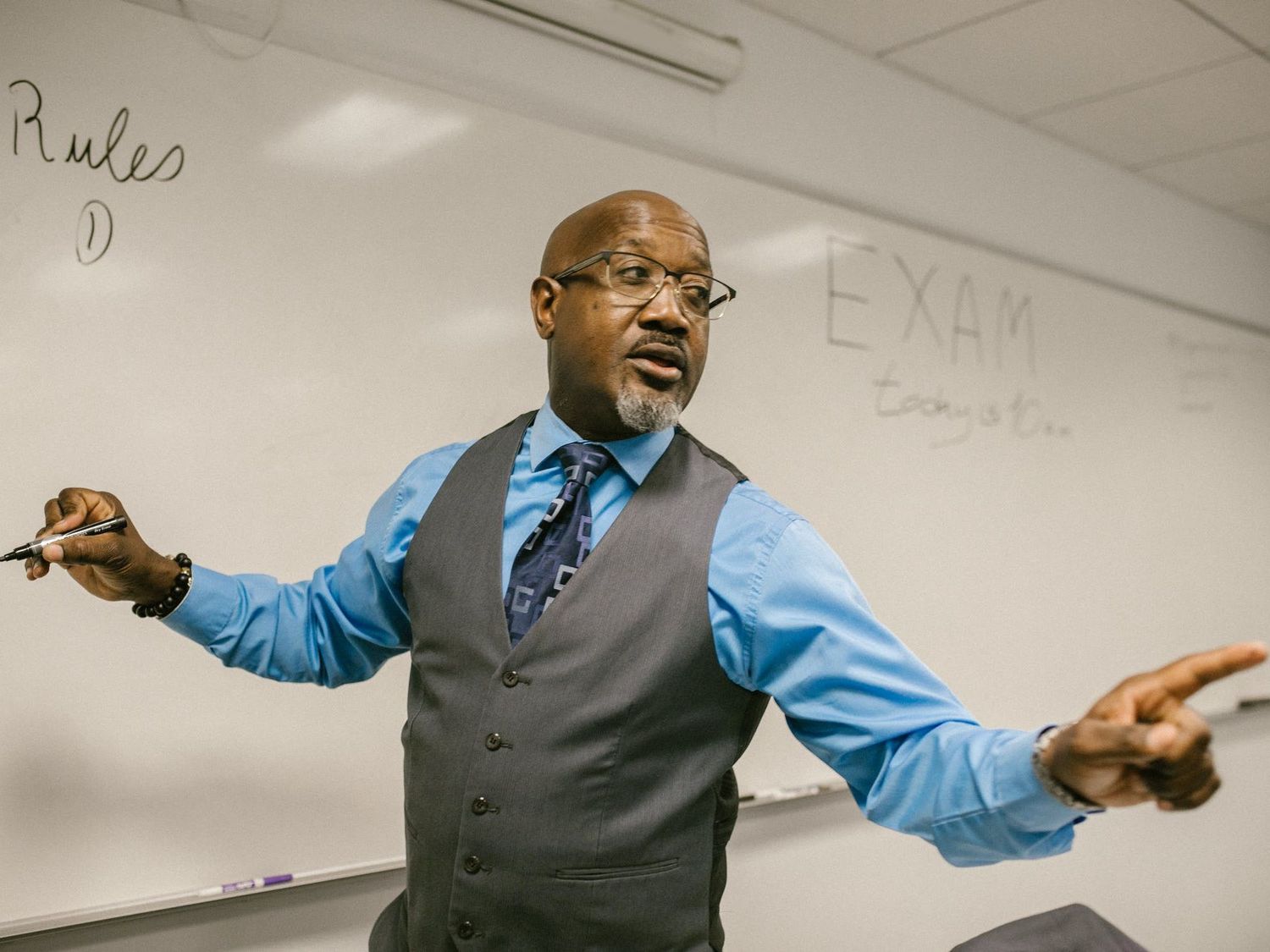Inspired by the work of Hochman and Wexler in the immensely popular ‘The Writing Revolution’, many secondary schools are making a far more conscious and methodical effort in recent years to work with learners at the level of ‘the sentence’ before expecting them to be able to produce ‘the text’. Emphasis on explicit, carefully sequenced instruction, building from the granular towards full composition can only be a good thing.
But the challenges here are greater than is often appreciated by those whose day to day practice is not in the classroom in front of a diverse and unpredictable room of young learners.
Couple this focus on the mechanics of sentence construction with the general (and, again, incredibly valuable) shift towards all teachers, regardless of subject, becoming ‘teachers of literacy’ and what you end up with is non-subject experts navigating incredibly complex grammatical dialogue with little to no training and little to no understanding of the prior knowledge of the learners in the room.
Now, teachers are immensely adaptable people and (often without any grounding in grammatical understandings from their own schooling) they are rolling up their proverbial sleeves and making some really decent teaching and learning happen. But I’m also increasingly aware of a common thread from my conversations with schools about their grammar instruction. See if this sounds like a familiar story to you…
You’re teaching your lesson on meiosis (or aerobic fitness, or media language, or Richard III etc.) and, under instruction from your department lead or SLT, you are asking your learners to demonstrate their understanding in the form of an appositive, which is a foundational technique from the Hochman methods espoused in TWR. It seemed a relatively simple idea in theory - a grammatical construction that provides additional information about the noun - but things start to unravel on contact with the living and breathing room of learners. It turns out that, to write an appositive, learners need to be able to recognise noun phrases, and to write noun phrases, they need to be able to recognise nouns.

Three examples of appositives used in sentences about time travel
Where are your learners up to with this prerequisite knowledge? Well, that muddies the picture even further; on the front row someone has already written three perfect appositive sentences whilst on row three a pair of eyes is looking pleadingly at you to stop and explain. Perhaps some learners could ‘do’ by imitation - they notice the pattern of words in front of them and mimic in their own writing - but it's when exploring the mistakes that the conversations become impossible without an ability to label what went wrong.
This is a story that is familiar in a range of different contexts. Have you tried teaching the passive voice, a convention of many disciplinary texts, to learners unfamiliar with English SVO word order? Have you tried teaching complex sentence structures to improve the informational density of your learners’ writing before they know how to identify a clause? I’m afraid I’ve been guilty on both counts, and the results are messy to say the least.
How can we do better?
If any of the above is remotely familiar, don’t despair. There is plenty we can do.
The starting point is to recognise the value of what you’re attempting to achieve. You didn’t shy away from that lesson that you knew would be a struggle. You worked through it because, deep down, you recognised that these are the building blocks your learners need to achieve success in their academic writing. If we want our learners to produce high level disciplinary writing, it's not fair for us to fail to teach them how to construct the constituent parts. We may not like it, but talking about the constituent parts of a piece of writing means talking about grammar.

Free downloadable Grammar Activity Pack
Check out our free downloadable Grammar Activity Pack for lots of fun grammatical tasks and challenges for your learners to try out!
That bit was easy but I’m afraid the next bit is less so. The next bit involves the deliberate planning of a grammar curriculum. How do we ensure we’re not attempting to teach noun phrases before our learners know what a noun is? How do we ensure that our learners can identify clause types before we instruct them to use a variety in their writing? Well, that comes down to good curriculum planning. It involves expert teachers mapping out the knowledge that they value and putting it in an order that works for learners. Same as everything else we deem valuable and that we teach in our schools.
It also involves measuring learner understanding. Not, of course, to pit learners against each other or even to share test scores with learners themselves, but simply to equip teachers with the insights they need to manage their lessons. How much simpler would it be to navigate a conversation about appositives if you know exactly which learners need a recap on nouns and noun phrases?
Bedrock is here to help
Bedrock learning can support schools with all of this. Click here to check out our grammar curriculum and our granular holistic assessment reporting that puts vital information about that grammar ‘blindspot’ at your fingertips in an instant.
A core part of our mission is to save teachers time so, if you recognise the need for a properly constructed grammar curriculum, are working in a school that doesn’t yet have one, and are short of the time needed to do the job yourself, get in touch with us; we’d love to support your valuable work. We’ve also put together an excellent Grammar Activity Pack for you to get your learners started on - download it for free below!






